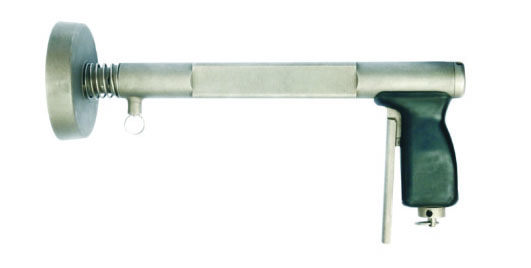Research on welding remelting process of speed-increasing vehicle
1 Overview Railway vehicle bogies have long been steel castings, but with the development of high-speed railroads, lightweight requirements have been placed on bogies. The welded structural frame can be selected according to the needs of the appropriate materials, and the thickness of the plate is reduced accordingly, so the welded bogie is widely used in high-speed trains. As an important load-bearing transmission device of the bogie, the frame directly affects the safe driving of the train. Especially in the high-speed operation state, strong vibration and impact loads act on the frame, and the fatigue performance and reliability of the frame are particularly important. The purpose of this project is to study the effect of TIG remelting on the fatigue properties of welded joints. 2. TIG remelting test TIG remelting means that the welded joint is reheated and re-melted by TIG welding without welding wire to improve the surface formation of the weld, especially the shape of the weld toe. This is a post-weld weld treatment method that smoothes the transition between the weld and the parent metal. (1) Welding conditions and methods In the study, two typical welded joint forms, butt joint and non-reinforced rib type, are used. The test plate preparation is carried out according to GB/T2649-1989, the base metal is Q345 (16Mn); the welding material: the welding wire is H08Mn2SiA; the shielding gas: MAG uses 80% Ar 20% CO2 mixed gas, TIG remelting adopts industrial pure argon (purity is 99.99%). Welding equipment: MAG welding uses thyristor type NBC-500 power supply, and TIG welding remelting equipment is SYNCROWAVE-250 power supply. (2) The gap between the MAG welding process test board group is 2mm, and it is not preheated before welding. The test plate group reserves a certain anti-deformation after the pair, and the single-sided welding double-sided forming method is adopted. The welding power source is DC reverse connection, and the welding process is uninterrupted. 3. Test results (1) The metallographic test is visible from the macroscopic metallographic cross section of the weld: the shape of the weld after TIG remelting is smooth, and the weld between the weld and the base metal is smooth, and the surface of the weld is finely corrugated. Improve the stress concentration here. From the microscopic metallographic observation of the weld, it is found that the grain of the microstructure of the weld bead remelted by TIG is significantly thinner than that of the main weld, which is beneficial for improving the crack resistance of the weld. (2) Microhardness test. The hardness of the TIG remelted weld bead and its heat affected zone is higher than that of the base metal and weld. This is mainly due to the certain hardenability of Q345 (16Mn) steel. (3) Pulsating tensile fatigue test The pulsating tensile fatigue test was carried out according to the GB/T13816-1992 standard, and the test cycle number was a conditional fatigue limit of 1×105. The test is divided into two cases: docking and cross angle. The treatment after docking sample MAG welding has the following three conditions: After 1MAG welding, the weld is smoothed. After 2MAG welding, the weld toe is remelted by TIG. After 3MAG welding, the weld is not treated.
Special Powder Fastening Tool - ZG211 Series
Applications
Technical Parameters
Features
Special Powder Fastening Tool,Underwater Fastening Tool,Fastening Tool For Underwater Use,Underwater Powder Actuated Fastening Tool Sichuan Nanshan Powder Actuated Fastening System Co., Ltd. , https://www.nanshanpat.com
(3) When the TIG remelting process is applied, the welding power source adopts the DC positive connection method. Before the TIG remelting, the slag and large particles splashing on the surface of the weld must be removed, because too much slag tends to cause slag inclusions and pores in the weld bead after TIG remelting, while large particles splash The welding process and stability are unfavorable, affecting the quality of the remelted weld. The weld toe TIG remelting test was performed on the above two joints on the basis of multiple tests.
